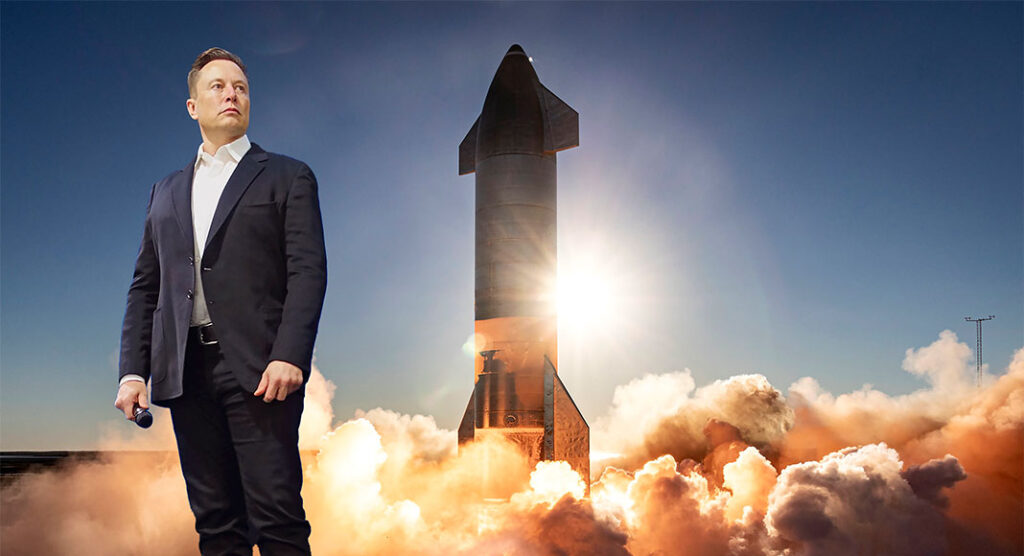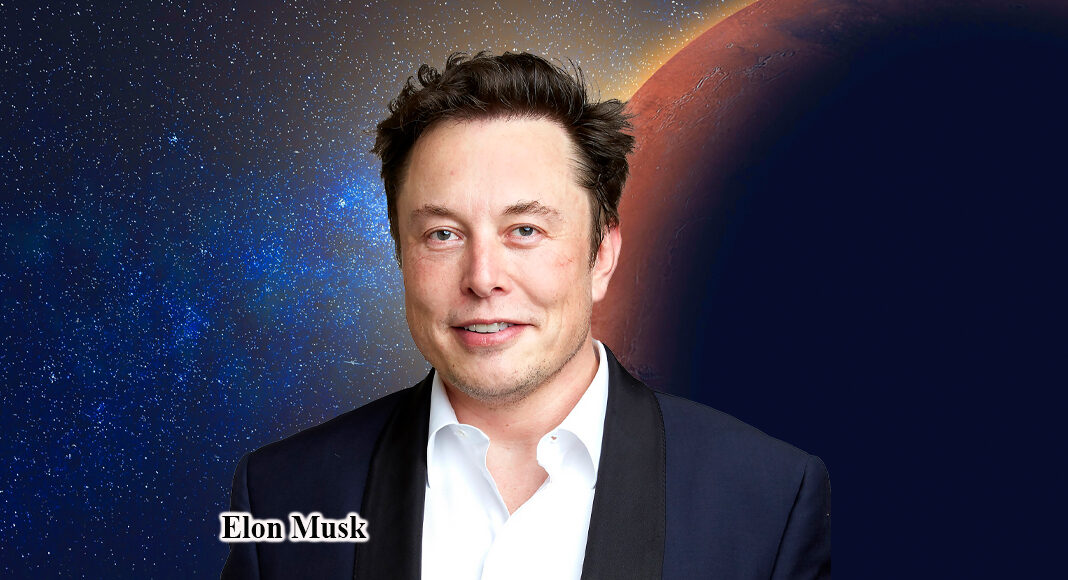Texas Border Business
You are disconnected from this world if you have not heard about Elon Musk. He is a professional and businessman out of this world. Texas Border Business has been following the successes of Musk for years and waited several months on the list until his constellation of satellites was ready to serve South Texas with broadband service. We are pleased and honored to feature him on Texas Border Business.
His latest endeavor among many, is that SpaceX files plans for ‘shell building’ in Bastrop County. SpaceX recently filed for construction of a massive building in Bastrop County, Texas which is just east of Austin. According to filings with the Texas Department of Licensing and Regulation, SpaceX is constructing a ‘shell building’ that will be 521,521 square feet. The facility was assigned the name “Project Echo.” The estimated cost of the project is $43 million, and the building is expected to begin its construction by October 2022 and be completed in June 2023.
While the filing does not list SpaceX by name, it does use the address for the company’s test facility in McGregor, Texas — a town of fewer than 5,000 residents outside of Waco. The SpaceX site is within an hour of a number of other ambitious projects associated with Elon Musk. The Tesla Gigafactory covers 2,500 acres along the Colorado River with over 10 million square feet of factory floor.
About Elon Reeve Musk, he is a naturalized American business magnate and investor. He is the founder, CEO, and Chief Engineer at SpaceX; the angel investor, CEO, and Product Architect of Tesla, Inc.; the founder of The Boring Company; and co-founder of Neuralink and OpenAI. With an estimated net worth of around US$253.4 billion as of September 7, 2022, Musk is the wealthiest person in the world according to both the Bloomberg Billionaires Index and Forbes’ real-time billionaires list.
Musk was born in Pretoria, South Africa, where he grew up. He briefly attended the University of Pretoria before moving to Canada at age 17, acquiring citizenship through his Canadian-born mother. Two years later, he attended Queen’s University and then transferred to the University of Pennsylvania, where he received bachelor’s degrees in Economics and Physics. He moved to California in 1995 to attend Stanford University but decided instead to pursue a business career. He co-founded the web software company Zip2 with his brother Kimbal. The startup was acquired by Compaq for $307 million in 1999. That same year, Musk co-founded online bank X.com, which merged with Confinity in 2000 to form PayPal. eBay bought PayPal in 2002, for $1.5 billion.
In 2002, Musk founded SpaceX, an aerospace manufacturer and space transport services company, which he serves as CEO and Chief Engineer. In 2004, he was an early investor in the electric vehicle manufacturer Tesla Motors, Inc., now Tesla, Inc. He became its chairman and product architect, eventually assuming the position of CEO in 2008. In 2006, he helped create SolarCity, a solar energy company that was later acquired by Tesla and became Tesla Energy. In 2015, he co-founded OpenAI, a nonprofit research company promoting friendly artificial intelligence (AI). In 2016, he co-founded Neuralink, a neurotechnology company focused on developing brain–computer interfaces, and then he founded The Boring Company, a tunnel construction company. Musk has proposed a hyperloop high-speed vactrain transportation system. He is the president of the Musk Foundation, which donates to scientific research and education.

Another Big Win is when SpaceX Invited World’s Carriers to Collaborate
SpaceX’s Chief Engineer Elon Musk and T-Mobile’s CEO and President Mike Sievert announced a breakthrough plan to provide truly universal cellular connectivity.
Despite powerful LTE and 5G terrestrial wireless networks, more than 20% of the United States land area and 90% of the Earth remain uncovered by wireless companies. These dead zones have serious consequences for remote communities and those who travel off the grid for work or leisure. The telecom industry has struggled to cover these areas with traditional cellular technology due to land-use restrictions (e.g., National Parks), terrain limits (e.g., mountains, deserts, and other topographical realities), and the globe’s sheer vastness. In those areas, people are either left disconnected or resort to lugging around a satellite phone and paying exorbitant rates.
Leveraging Starlink, SpaceX’s constellation of satellites in low Earth orbit, and T-Mobile’s wireless network, the companies are planning to provide customers text coverage practically everywhere in the continental U.S., Hawaii, parts of Alaska, Puerto Rico, and territorial waters, even outside the signal of T-Mobile’s network. The service will be offered starting with a beta in select areas by the end of next year after SpaceX’s planned satellite launches. Text messaging, including SMS, MMS, and participating messaging apps, will empower customers to stay connected and share experiences nearly everywhere. Afterwards, the companies plan to pursue the addition of voice and data coverage.
In addition, Elon and Mike shared their vision for expanding Coverage Above and Beyond globally, issuing an open invitation to the world’s carriers to collaborate for truly global connectivity. T-Mobile committed to offer reciprocal roaming to those providers working with them to enable this vision.
This service will have a tremendous impact on the safety, peace of mind, and individual and business opportunities around the globe. The applications range from connecting hikers in national parks, rural communities, remote sensors and devices, and people and devices in emergency situations, such as firefighters.
This satellite-to-cellular service will provide nearly complete coverage anywhere a customer can see the sky—meaning you can continue texting and eventually make a cell phone call even when you leave terrestrial coverage. We’ve designed our system so that no modifications are required to the cell phone everyone has in their pocket today, and no new firmware, software updates, or apps are needed. As a complementary technology to terrestrial networks, SpaceX can enable mobile network operators to connect more people, fulfill coverage requirements, and create new business opportunities.
What a Big Fiesta when Tesla Inaugurated its Gigafactory Texas Plant with a “Cyber Rodeo”
Gigafactory Texas (also known as Giga Texas or Gigafactory 5) is an automotive manufacturing facility near Austin, Texas built by Tesla, Inc. Construction began in July 2020, limited production of Model Y began before the end of 2021, and initial deliveries of vehicles built at the factory took place at an opening party called “Cyber Rodeo” on April 7, 2022.
The factory is also planned to be the main factory for the Tesla Cybertruck and the Tesla Semi and produces Model Y cars for the eastern United States. It also serves as the site of Tesla’s corporate headquarters. It is the country’s second biggest factory by size as well as the second largest building in the world by volume. “We needed a place where we could be really big, and there is no place like Texas,” Musk said.
Another Win when SpaceX Announced the Launch of Polaris Program Missions, coming the Fourth Quarter of 2022
Jared Isaacman, founder, and CEO of Shift4 who commanded the Inspiration4 mission, announced the Polaris Program, a first-of-its-kind effort to rapidly advance human spaceflight capabilities, while continuing to raise funds and awareness for important causes here on Earth. The program will consist of up to three human spaceflight missions that will demonstrate new technologies, conduct extensive research, and ultimately culminate in the first flight of SpaceX’s Starship with humans on board.
The first mission, Polaris Dawn, is targeted to launch no earlier than the fourth quarter of 2022 from historic Launch Complex 39A at NASA’s Kennedy Space Center in Florida. This Dragon mission will take advantage of Falcon 9 and Dragon’s maximum performance, flying higher than any Dragon mission to date and endeavoring to reach the highest Earth orbit ever flown. Dragon and the Polaris Dawn crew will spend up to five days in orbit, during which the crew will attempt the first-ever commercial spacewalk, conduct scientific research designed to advance both human health on Earth and our understanding of human health during future long-duration spaceflights. This will be the first crew to test Starlink laser-based communications in space, providing valuable data for future space communications systems necessary for missions to the Moon, Mars, and beyond.
The Polaris Dawn mission has many first-time objectives, so the Polaris Program chose a crew of experts who know each other well and have a foundation of trust they can build upon as they undergo the challenges of this mission. In addition to Isaacman, the crew includes Scott “Kidd” Poteet, a veteran member of Jared’s team, and two SpaceX employees, Sarah Gillis and Anna Menon.
Sources: SpaceX, Tesla Inc., Texas Department of Licensing and Regulation, and Wikipedia.
Text from Wikipedia is available under CC BY-SA 3.0.















